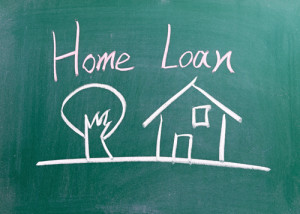We’re nearly half a decade removed from the dark days of the real estate crash, mortgage meltdown, and Great Recession in the U.S., and yet we still have a shadow that’s cast over the national housing landscape. In fact, home ownership is at an alarmingly low level, despite low interest rates, strong job numbers, and healthy distressed property numbers once again.
Yet still, many Americans find themselves sitting on the sidelines of achieving the dream of home ownership like no time in modern history. There are several reasons for this – including the shocking increase in student loan debt that is inhibiting Millenials from buying, rising healthcare costs that are a priority for Boomers, and a general reluctance not to get burned again by real estate.
But with rents increasing at a rate that far surpasses inflation, it’s crucial that Americans take advantage of the opportunity to own a home if they are capable and qualified to own. It is not just in their best interests, but essential for the country to achieve long term economic balance and growth in the housing market.
Therefore, education about first time home buyer initiatives, low-down payment loan options, real estate and mortgage classes and information aimed at neophytes, and sage advice stressing the financial benefits of home ownership – including tax breaks – are crucial.
Here are 25 Facts and statistics about home ownership in the U.S. that show why that education is vital.
1. The U.S. homeownership rate, as per Q2 of 2015, was 63.4%.
2. That’s down 1% from the second quarter of 2014.
3. That percentage marks the lowest homeownership rate since 1967.
4. The 50-year average for homeownership rate is 65.3%.
5. Home ownership was at an all-time high of 69.2% in 2004, well before the credit bubble burst in 2008.
6. To put it in perspective, the lowest point of home ownership was in 1960 and 1961 in the 62% and change range, but it’s never dipped anywhere near 62% again.
7. The median value of a home has risen every decade throughout U.S. history since 1940. Even though home values took a temporary hit with the real estate crunch from 2008-2010, the median value was at an all time high as of 2010, at $179,900.
8. Out of the 45 top countries, the U.S. sits #34 for home ownership rates.
9. Surprisingly, Romania has a 96.6% homeownership rate and Lithuania 91.9%, among many other Eastern European countries at the top of the list. 90% of people in China own their own home, India 86.6%, Russia 84%, Mexico 80%, Iceland 77.3%, Brazil and Italy 74.1%, Sweden 70.1%, Canada 69%, Australia at 67%, and the United Kingdom 66.7% right above the U.S., among others.
10. Of all U.S. homes, exactly two-thirds, 66.9%, are owner-occupied, and the others are rentals.
11. The U.S. counties with the highest average home values are:
Manhattan, NY $812,300
Marin, CA $759,300
San Francisco, CA $737,300
San Mateo, CA $710,100
Teton, WY $705,600
12. The U.S. counties with the lowest average home values are:
Lechter, KY $56,900
Willacy, TX $50,500
Coahoma, MS $54,700
Harlan, KY $54,400
McDowell, WV $39,000
13. Of adults 35 and younger, 36% own their own home.
35-44 years old: 59.1%
45-54 years old: 70.1%
55-64 years old: 76.6%
65+: 80% own a home!
14. Every state in the U.S. has a home ownership rates over 50%!
15. The states with the highest home ownership rates:
West Virginia 76.2%
Michigan 74.9%
New Hampshire 74.2%
Delaware 73.8%
Maine 73.3%
16. The states (and district) with the lowest home ownership rates:
Hawaii 56.7%
Nevada 56.2%
California 54%
New York 53.8%
District of Colombia 45.3%
17. New homeowners purchase more products and services in the first six months after moving than an established resident spends in a two-year period.
18. The housing sector directly accounted for approximately 14% of total economic activity in 2009.
19. Today, the average size of a home is 2,224 square feet.
20. Compare that to the average size of 1,650 square feet in 1978!
21. With all of that extra room, do we have bigger families and more people staying in each household? These days, the average family size in a household is 3.15, but back in 1978 it was bigger, with 3.33 person per household.
22. 2012 Pew survey found that 86% of Americans now believe the key to a middle class life is a secure job, and only 45% say the same about owning a home. In 1991, 70% of respondents in a CNN/Time/Yankelovich Partners poll said home ownership was essential to membership in the middle class membership, while only about 50% said it was a white-collar job.
23. A recent survey states that 51% of people said the 2008 real estate and mortgage meltdown did not change their willingness to buy a home and an additional 27% said it actually made them more likely to do so. That’s about 78% of the population who want to hold keys to their own front door.
24. 86% of those surveyed, list the income-tax benefits of owning a home as a big reason to buy. Being able to choose a good school system for their kids, privacy, and being free to fix up their home as they wish were also important factors.
25. Nearly two-thirds of people surveyed still believe purchasing a house is a safe investment.

